Introduction
Welcome to Forum 44 (June 2023).
This issue of Forum contains information on the final events of our 2022-2023 programme, and announces the programme planned for 2023-2024 (our 150th anniversary year). Please put the dates in your diaries. Information about renewing your membership for 2023-2024 will be sent in July.
I would like to apologise for an error in Forum 43: the date for the AGM and Peter Firth’s talk on the history of the University Extension Movement was incorrect. The correct date is Wednesday (not Friday) 12th July 2023.
Regular contributor Mary Ormsby spent her working life in R&D at Pilkington and is therefore our resident expert on the technology of glass making. In this edition of Forum, she has contributed a fascinating article on glass for the automotive industry.
Roger Mitchell hinted last month, in The Trouble with History, that he was minded to undertake a review of Amanda Foreman’s book A World on Fire, which deals with Britain’s involvement in the American Civil War. He has somehow managed to find the time to read this 1000-page epic and provide us with an excellent review in time for this edition.
I have contributed a review of Alan Potter’s recent course on Uncovering the Mystery of Chemistry.
Chris Nelson
SUES Summer Programme
Friday 23rd June, 2.30pm at All Saints Church Hall
‘Southport’s Victorian Visitors’ – Michelle Caldwell
Southport’s Victorian Visitors is based on archival research that traces celebrity visitors to Southport through the long nineteenth century. It discusses rumours of Napoleon III and the town’s well-known connections with P.T. Barnum, as well as some more surprising visitors including Oscar Wilde and Sigmund Freud.
The talk places these visits in context with British history generally and with the development of Southport in particular, and includes anecdotes from the local press that cover some bizarre events – from escaping sea lions to hidden ventriloquists!
About Michelle Caldwell: “I returned to university in my forties to study English Literature at Edge Hill, and I loved every minute of it. I was amongst the first cohort of EHU’s new MA in Nineteenth Century Studies, which takes a multidisciplinary approach to literature and history, and which included a project-based module in which I researched and designed an exhibition on Southport’s Victorian Visitors for The Atkinson Museum. The exhibition was a real learning curve for me, never having done anything like that before, but it was immensely rewarding and enjoyable to do. Similarly, public speaking is something very new to me and continues to be somewhat daunting – this is at heart a school project that has gotten too big for its boots!”
Wednesday 12th July, 2.30pm at All Saints Church Hall
SUES Annual General Meeting, followed by:
‘The University Extension Movement in Southport 1874-2024’. Peter Firth
Papers for the AGM will be sent out before the day. After the formalities, Peter Firth will introduce us to the research that he is doing on the history of SUES and its links to the wider history of the University Extension movement.
Thursday 31st August, 2.30pm.
Visit to Meols Hall, Botanic Road, Churchtown (opposite the Botanic Gardens)
Much of Meols Hall house was rebuilt in the 1960s using material from 18th century houses that had been demolished in the 1950s. The result has been described as ‘one of the most successful country houses created in England since the Second World War’.
We will meet at Meols Hall at 2:30 pm. After the visit we will walk to the Hesketh Arms for refreshments (a small pudding and hot drink, or just a drink if you prefer). The total cost for the visit and refreshments will be £12 (pay on the day), and a full-colour guidebook will be available for an additional £5. To register for the visit please email or phone Mary Ormsby (mormsby@btinternet.com), preferably before 17th August.
SUES Programme 2023-2024
Single Session Lectures and Events
Friday 15th September 2023
Emma Copestake – Liverpool’s Dock Community during the National Dock Labour Scheme of 1967-1989
Friday 27th October 2023
Eric Woodcock – ‘Lankie Lekkies’ – Electric Vehicles from the 1880s to Present Day
Friday 8th December 2023
Ed Montana-Williams – Turner and Constable, Rivals for Greatness
Friday 26th January 2024
Robert Eden – Bugs Everywhere – From Stinky Ponds to cracked North Sea Pipelines
Fri 23rd February 2024
Julia Clayton – The Fiction of Forgery: Art and Authenticity in the English Novel
Friday 22nd March 2024
Stephen Lloyd – Shakespeare, the Earls of Derby and the North West
Friday 26th April 2024
Alan Crosby – Providing elementary education in Victorian Lancashire
Friday 12th July 2024
SUES Annual General Meeting
Courses
Peter Firth – Medieval Bookends (£50)
2023: 25th Sept., 2nd, 9th, 16th, 23rd & 30th Oct., 6th, 13th, 20th & 27th Nov. (all Mondays)
Roger Mitchell – Colonial & Post Colonial America (£40)
2024: 8th, 15th, 22nd & 29th Jan., 5th, 12th & 26th Feb., 4th March (all Mondays)
Alan Potter – Technology – How Things Work! (£30)
2024: Mon 8th, Thurs 11th, Mon 15th, Thurs 18th, Mon 22nd & Mon 29th April
Peter Firth – The University Extension Movement (Free)
2024: 13th & 20th May, 3rd & 10th June (all Mondays)
Course Review:
Uncovering the Mystery in Chemistry with Alan Potter
The SUES course for Summer 2023 ran over 6 sessions in May and June. In his description of the course, Alan had commented that we often gain little or no knowledge of chemistry after leaving school, even though it’s a subject “fundamental to everything in our lives, and indeed life itself”. This struck a chord with me: having struggled through my chemistry O level exam in 1975, I have given the subject a wide berth ever since. Here, hopefully, was a chance for me to lay a ghost!
Alan defined chemistry as “the investigation and understanding of matter”. In the first two sessions he took us through the history of the subject, explaining that, as early as the stone age, humans would have started to observe how different materials or substances can be changed, or combined with altered properties. For example, wood becomes ash when burned in a fire, and when rocks are placed around the fire and heated, metals (such as gold, silver, copper and tin) can be extracted. Copper and tin could be combined to make the harder (and useful) bronze. Bronze gave way to iron much later – iron needs more heat than copper and tin to melt it.
The Ancient Greeks developed the concept of four elements: earth, air, fire and water, from which everything was thought to be made up. In the 8th century, the Islamic alchemist Jabir ibn-Hayyan supplemented the four Greek elements with salt, sulphur and mercury and coined the term ‘alchemy’. Alchemists sought, for many centuries, to create cures for disease, discover the ‘elixir of life’ (immortality) and, by ‘transmutation’, turn ‘base metals’ into gold. The modern term ‘chemistry’ was coined in 1661 by Robert Boyle, the ‘father of chemistry’; he used what we would recognise as modern scientific methods, assuming nothing and insisting on experimental results being repeatable. The Age of Enlightenment followed, during which many elements, such as hydrogen and oxygen, were discovered, and this enabled the industrial revolution of the 18th and 19th centuries.
John Dalton (1766-1844) established the concept of the atom. His atomic theory stated that the atoms of a given element had a particular size and mass, and that the atoms of different elements combine to form compounds. His contemporary, Jon Bezelius, introduced modern chemical symbols. Dmitri Mendeleev (1834-1907) created the periodic table, in which the elements were arranged according to their atomic weights and are grouped with others that react similarly. He left gaps for elements as yet undiscovered. The 92 elements he predicted had all been isolated by 1940; the natural universe contains only these 92 elements, but others can be made synthetically, and by 2016 there were 118 known elements. In my O level studies, I had never really appreciated the elegance of the periodic table, but Alan has put that right!
In the third session, Alan discussed the nature of atoms. We learned about the changes in substances (from solid, to liquid, to gas) with increased energy as temperature rises and the distinction between physical and chemical changes of state. We learned how atoms are made up of protons, neutrons and electrons, and how the arrangement of the electrons, in a series of concentric ‘shells’ orbiting the nucleus of the atom, determines how the atoms of different elements combine with others, either by sharing electrons (covalent bonding) or donating/receiving electrons (ionic bonding).
Session 4 introduced the subject of carbon-based organic chemistry, the basis of all life on earth. This was the first session in which we got to do some practical work; initially assembling plastic models of various molecules, to illustrate the way the atoms of different elements are able to combine. We also enjoyed removing some electrons from the atoms on the surface of an inflated balloon, and proved it by generating a static charge that would stick the balloon to the wall!
Developing the discussion of organic chemistry, we heard that, while attempting to synthesise quinine, Perkin (1856) created mauvine dye from coal tar. Later, the distillation of crude oil into its various ‘fractions’ superseded coal tar and enabled the production of petroleum gas, petrol, naphtha, paraffin, diesel, fuel oil, lubricating oil and bitumen. This also led to the development of plastics, early examples being celluloid (the first thermoplastic) and Bakelite (the first thermosetting plastic). We enjoyed another practical exercise, when some of us managed to push a lubricated skewer all the way though a balloon without bursting it, demonstrating how the long elastic polymer strands in the rubber can be teased apart.
Alan finished this session with a thoughtful discussion on explosives: Schönbein accidentally created nitrocellulose or ‘gun cotton’ after wiping up a spillage of nitrous and sulphuric acids with a cotton apron, which ignited when it had dried. Dewar and Abel produced a safer version, cordite, which produced less smoke than traditional gunpowder, ironically leading to more battlefield casualties since visibility was improved! Cordite contained nitroglycerin, which was dangerous, but very useful for blasting. Alfred Nobel’s brother was killed in an accident involving nitroglycerin, so he set out to make a safer version, mixing it with an absorbent earth to produce dynamite. Although intended for industrial use, it too was used for military applications. Having been described as the ‘Merchant of Death’ in a premature obituary, Nobel was moved to establish the Nobel Prizes, including that for Peace.
The next session again involved the course members in some entertaining practical work. We discussed acids and alkalis. Pure water is neutral (neither acid nor alkaline). Solutions of substances in water produce acids and alkalis if there are more positive or negative ions, respectively. We had some fun identifying four mystery liquids using litmus paper, pH paper and a home-made indicator based on red cabbage! We also learned about the roles of some acids and alkalis in food, and the section of the course on organic chemistry culminated in introduction to the molecular structure of amino acids and DNA.
Alan then moved on to discussion of the atomic nucleus. We learned of Röntgen, who accidentally discovered X-rays, when experimenting with vacuum tubes, effectively founding the science of radiology. Alan told us the very inspiring and moving story of Marie Curie who, with her husband Pierre, studied rays emitted by uranium ore, discovered two new elements and coined the term radioactivity; they were awarded the Nobel Prize for Physics in 1903. After Pierre’s death she was awarded a second Nobel Prize, this time for Chemistry. During the First World War, she drove ambulances and trained nurses in radiography. This set the scene for us to learn about radioactivity and the nature of positively charged α (alpha) particles, negatively charged β (beta) particles and γ (gamma) rays (electromagnetic radiation with no electrical charge). We learned how the emission of an α particle changes the atom to a different element, since it has lost protons. Alan discussed nuclear fission, in which a heavy atomic nucleus is split into two or more smaller nuclei (becoming different elements) as well as releasing energy in the form of electromagnetic radiation and heat. Because one element changes into one or more different elements, fission is a form of transmutation (turning one substance into another) so, as Alan pointed out, the early alchemists were not entirely misguided!
Into our final session, and we looked at some practical applications of chemistry that were important in the industrial revolution. Pilkington had invented a way of making flat panes of glass by floating molten glass (the main ingredient of which is silicon dioxide, or silica) on a bed of molten tin [see Mary Ormsby’s article below]. Lever Brothers had developed modern soaps by ‘saponification’, using glycerine or palm oil instead of the traditional tallow. As an interesting aside, Alan pointed out that, while Lever Brothers had established a reputation for treating their British employees well (at Port Sunlight), they had been exploitative employers of workers in the Belgian Congo until 1945.
We discussed catalysts – something that does not take part in a chemical reaction, but helps it to take place by ensuring that the ‘activation energy’ is reached. Enzymes in the human body are bio-catalysts. Fritz Haber used iron as a catalyst to make ammonia from nitrogen and methane gas, thus enabling the production of fertiliser on an industrial scale, greatly benefiting the world. However, he also worked on chemical warfare in the First World War, creating mustard gas, among others.
Alan took the subject to another level as he ended the course by discussing the chemistry of the universe. Analysis of the light emitted by distant stars shows that they are mostly (99%) hydrogen and helium. No elements have been detected other than the 92 that occur naturally on earth. The ‘big bang’ at the start of the universe arose from a single particle smaller than a proton! In the first 3 minutes, hydrogen, helium and lithium were created before cooling prevented the creation of heavier elements; it then took 380,000 years before gravity began to clump matter together, forming dust, and eventually planets, with a “cocktail of new elements”.
I have to mention the practical demonstrations in the final session. Alan mixed some substances together in an attempt to produce an iodine solution. He warned us that it didn’t always work, and after some stirring, put down the flask containing a clear, colourless, liquid and walked away. I was lucky enough to be looking in the right direction when it changed, in an instant, to a dark blue liquid. Magic! I have since discovered that this is a famous experiment/conjuring trick known as the Iodine Clock.
For his final piece of theatre, Alan placed a large bottle of Coca Cola on the table, removed the top, dropped in a few Mentos mints and quickly stood back. The Coke spewed out of the bottle, creating an impressive fountain, and we finally understood why a tarpaulin had been laid around the table! The theory here is that the tiny pores in the surface of the mints accelerates the release of the carbon dioxide gas from the Coke – a great demonstration of a catalyst at work.
This course did what I expected – blowing the dust off some of the chemistry I had learned in school all those years ago – but went much further, demonstrating that the subject has a breadth I hadn’t appreciated; it covered topics I would have filed under biology, physics and even cosmology – but really everything is about chemistry, as Alan so ably showed us. Thanks to Alan for this very informative, and (in appropriate measure) entertaining course.
Chris Nelson
Glass in Cars –
More Than Just Something to Look Through
Most of us have cars, or if we don’t we use buses and trains – but have you ever stopped to think about what materials and technologies are involved or how car windows have changed over time? Having worked in R&D at Pilkington for all my career I became very aware of the changes in the demands from the automotive manufacturers. The car glazings add aesthetic, functional and structural properties to vehicle design, and the shortening development times of the car manufacturers requires glazing suppliers to play an increasingly integrated role in the design and assembly of complex glazing.
Car manufacturing is a global business: as early as 2002 the top six car manufacturers had a combined market share of 80% (in the new car sector) and 66% of their glazing requirements were supplied by three global glass suppliers, of which Pilkington Automotive is one.
Over the past 50 years almost every major advance in glass has been made by Pilkington, from the invention of the float process in 1959 to self-cleaning glass. Pilkington, now part of the NSG group, currently invests around £29 million a year in research and development focused on product development and manufacturing efficiency improvement.
One of the key R&D centres for NSG is at Lathom in West Lancs, where a team of material scientists, chemists, physicists, mathematicians and engineers design, develop, test and take through to manufacture new products and processes. As the automotive industry aims for a “12-month car” design cycle the fact that mathematicians at Lathom can computer simulate the glazing performance, and predict ease of manufacture, enables the car designers to achieve their aims.
The History of Automotive Glass – Automotive Product Categories
The first automobile owners never cleaned their windscreens or rolled down their side windows, because their cars did not have any! Without any glass, goggle-wearing drivers and passengers were vulnerable to any insects or objects that whizzed through the air.
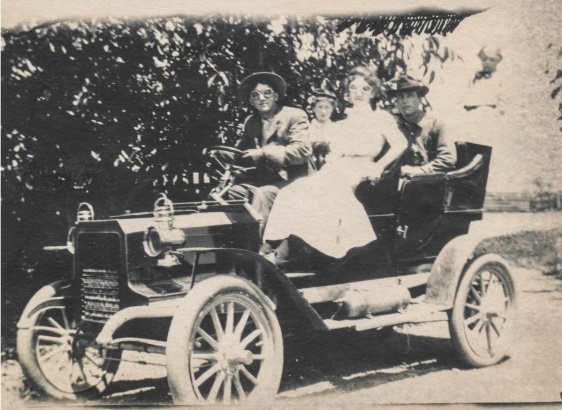

The windscreen was first introduced in 1904, made of plate glass; it was able to fold horizontally, but for the next decade, along with speedometers and headlights, it was an optional extra! By the late 1910s windscreens were prevalent but far from perfect. They shattered when hit by a sharp object, often into large pieces with jagged and sharp edges. In these days drivers occasionally died when collisions forced them through their windshields.
Safety
As a result, development of products to improve safety became a priority. The first step in the development of a ‘safety glass’ was to use toughened glass, which when broken shatters into very small, but blunt pieces. The glass is toughened through a combination of heating to very high temperatures (>640oC) and controlled differential cooling. Toughened glass is now most frequently used in the rear and side windows of vehicles.
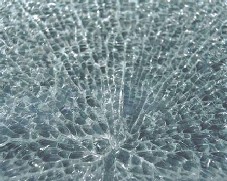
Toughened glass solved the problem of cuts but not the fact that the driver could still be ejected from the car through the windscreen. This problem was solved by using laminated glass. Laminated glass was first invented in 1903 when Eduoard Benedictus, a French chemist, discovered it by accident when one of his cellulose-coated beakers broke in the lab but kept its shape.
The first modern laminated windscreen, which is two pieces of thin glass sandwiched around a polyvinyl butyral (PVB) interlayer, was introduced in the 1930s and became the industry standard in the 1960s. When the laminate is broken the glass is held in place by the interlayer, retaining some visibility and also preventing drivers being ejected from cars after a high energy impact.
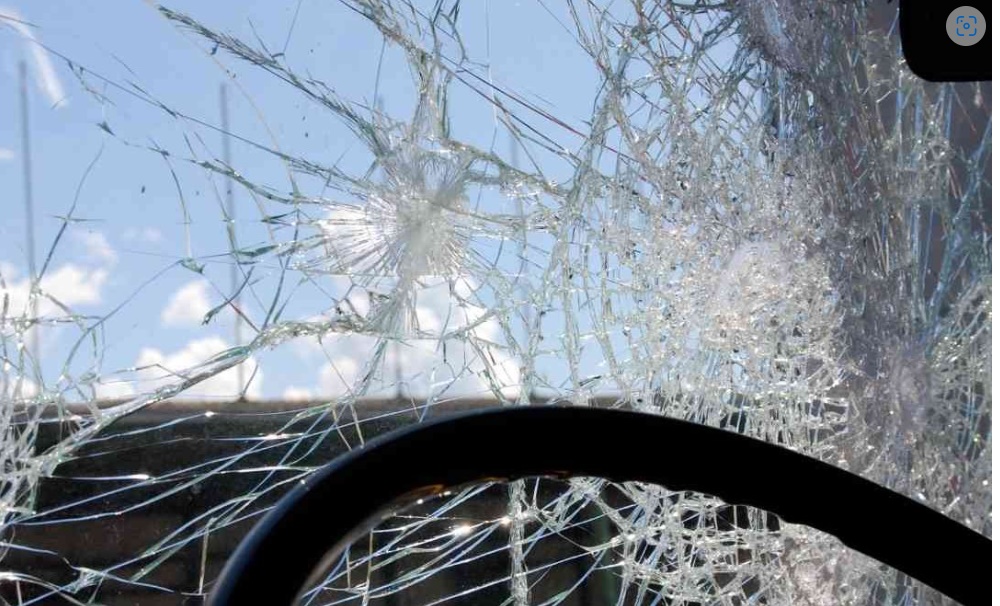
Making a laminated windscreen is quite a complex process. The glass sheets have to be cut to size, edge worked (to prevent cracking from the edge) and then shaped, as today’s windscreens are anything but flat.
Once the pair of glasses are prepared, an opaque PVB film is then placed between the plies, the trapped air is removed through a combination of mechanical or vacuum squeezing processes and then the glass and PVB are bonded together by heating in an autoclave to 140oC under a pressure of 10‑15 kgm2.
Laminates are now starting to be used in side and rear glazings where they contribute to increased security for possessions within the car and, if an acoustic interlayer is added, laminated glazings can also contribute to noise reduction and therefore increase the acoustic comfort of passengers. Their use in these areas is, however, sometimes questioned because it makes getting out of, or into, a car in an emergency more difficult.
Thermal Comfort
As well as tinted and coated glass playing an important role in model differentiation, their use also provides improved thermal comfort for passengers and reduces the degrading effects of sunlight on interior trims and fabrics. Tinted windows are also important for fuel efficiency as they reduce the demand on the air conditioning system – something which becomes even more important in electric vehicles.
Two technologies are used: either tinting the glass by adding different metal oxides during the manufacture of the float glass to absorb the infrared (IR) radiation; or by applying a coating on to the glass surface which reflects the IR radiation instead. The latter technology is used for windshields where the transmission has to be in excess of 70% under the tightly controlled modern safety standards.
Visual Comfort
We all know the problems on a winter morning when the windscreen is covered in ice and then condensation forms on the inside surface. Two products are available to overcome these problems: either very fine heating wires embedded in the laminate – these are typically seen on Ford cars – or a heat conducting coating on the inside surface of the glass laminate. The target here is to completely de-ice the windscreen, at -5oC in under two minutes. This poses a challenge for an “all electric” vehicle.
Another interesting development is to use a hydrophobic, or rain shedding, coating which causes water droplets to be more easily removed from the outside of a piece of glass. It is used to increase the visibility in rainy conditions and to reduce the time necessary to remove ice. When combined with the flow of air around a moving car, hydrophobic coatings can give much clearer windows.
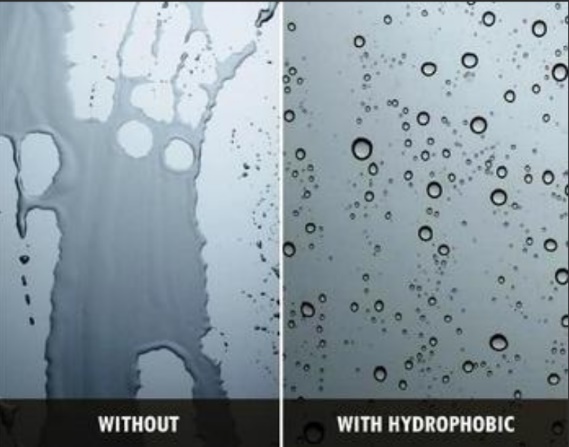
This technology is useful on all the car’s glazings, but especially on the side windows, which do not have the benefit of windscreen wipers!
Integrated Systems
As the technologies used in cars become more sophisticated, and the demand is for rapid car assembly, other technologies have had to be developed. For example, many front and rear screens now incorporate antenna systems. Whilst these have been in use since the 1970s, their development is being driven by growth in the areas of radio, telephone (GSM), navigation (GPS), remote keyless entry (RKE) and paging systems.
Increasingly, glazing systems rather than a simple piece of glass are being supplied to the vehicle manufacturers. Glazing systems help to simplify the vehicle assembly process. Modular systems such as encapsulation and extrusion are designed to facilitate adhesive bonding of the glazing to the vehicle.
Glass is also screen printed with ceramic inks to hide the adhesive fixing structures used for front and rear screens. The glass is screen printed with a bespoke ceramic dot pattern to give an aesthetically pleasing finish to the part – as well as showing the part maker.
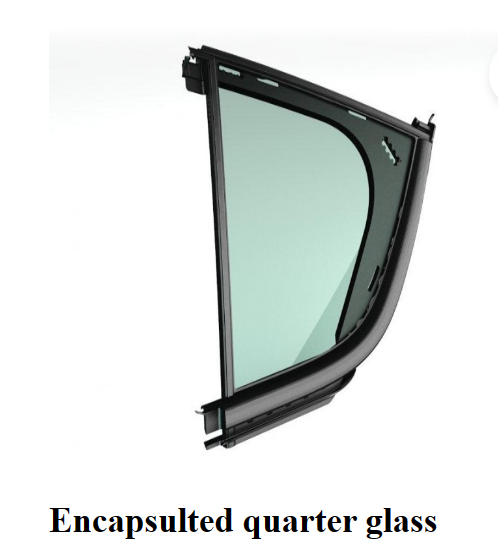
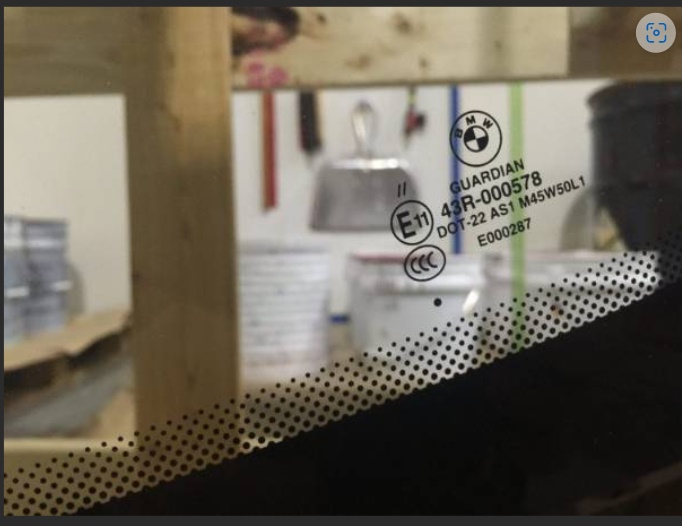
So next time you wash your car, or travel on a bus, take some time to look at the windows and see the technology embedded in them which we all take for granted, and marvel that most of it was developed just down the road!
Mary Ormsby
A World on Fire by Amanda Foreman
You may remember that in last month’s Forum I committed myself to tackling this epic, 1000-page history of Britain’s involvement in the American Civil War of 1861-1865. It proved an enjoyable and worthwhile activity, but it is quite a demanding book to read and must have been an extremely demanding book to write. I wonder if Amanda Foreman looked back with nostalgia to her doctoral thesis on Georgiana, Duchess of Devonshire that she so successfully adapted into a best-selling book and an equally successful film. There is unlikely to be a film of A World on Fire and there are plenty of hardback copies available online at low prices. However, Foreman’s complex history is probably a greater achievement than her more straightforward biography. With Georgiana, she was able to create a clear and well documented narrative of a complicated and fascinating life. Georgiana was a woman who sought and used publicity and had few qualms about either kissing or telling.
Things are very different in A World on Fire. There is no central heroic figure, although ‘great men’ (and they are men) make frequent appearances. In America, Abraham Lincoln and Jefferson Davis, Ulysses S Grant and Robert E Lee are often mentioned but rarely dominate the narrative. On this side of the Atlantic, three of the most important of Victorian politicians held office throughout the war. Palmerston was Prime Minister, Russell was Foreign Secretary and Gladstone was Chancellor of the Exchequer but again they are relatively rarely at the centre of events. Anyone wishing to study the second Palmerston Ministry (June 1859 to October 1865) would look elsewhere for material. Instead, Foreman provides us with a Dramatis Personae of more than 10 pages. There are 100 Americans but only 96 British. However, Queen Victoria and Prince Albert do not appear in the list, although they have significant roles in the book. By including them and the Duchess of Sutherland and her daughter, the Duchess of Argyll, both actively involved in political activities, we can reach triple figures and equality between British and Americans. What is more, the addition of a Queen and two Duchesses increases the number of women from 8 to 11.
Foreman’s title is dramatic but perhaps misleading. America was certainly a country on fire, with a civil war that lasted almost exactly four years and involved bitter fighting with very high casualties for soldiers and extreme hardship for civilians, particularly in the south. However, it remained a civil war rather than an international one. No European power was directly involved, although both France and Britain came perilously close and European volunteers, including many British and Irish, fought in both armies. Diplomacy rather than military action is at the heart of the story and the two individuals who have the longest entries in the book’s index (another 45 pages) are Charles Francis Adams, American Ambassador to Britain from 1861 to 1868, and Richard Bickerton Penell Lyons, second Lord Lyons, British Ambassador to the United States from 1858 to 1865. Both were highly competent, extremely hardworking and well aware of the risks. Had they been less good at their jobs, or more cavalier in their actions, their two countries might well have gone to war. They deserve their place of honour in this book, but it has to be said that neither exuded charisma and that both actively sought a quiet life. Amanda Foreman introduces them thus.
“Even by English standards, the unmarried 42 year old Lord Lyons was an eccentric character. Any display of emotion – including his own – made him uncomfortable. Women and servants tended to suffer from an excess of it in his opinion, which made him dread close contact with either and he was reluctant to look people in the eye. Though not a killjoy, he had never developed a taste for alcohol and smoking made him ill. In Washington his lack of interest in cigars and whisky simply accentuated his strangeness.”
Adams was not much more forthcoming. “He despised small talk, hardly drank and never danced. At 53, Charles Francis Adams was a curious figure of a man; he managed to convey the impression of being not quite formed, that there were still untapped reserves of potential, while simultaneously appearing old and disillusioned with the world. Being the son and grandson of American Presidents had both defined him and yet robbed him of ambition. It was as if at a young age Adams had entered internal exile and found the place congenial.”
The two men might well have enjoyed each other’s company but, of course, they spent their time on opposite sides of the Atlantic.
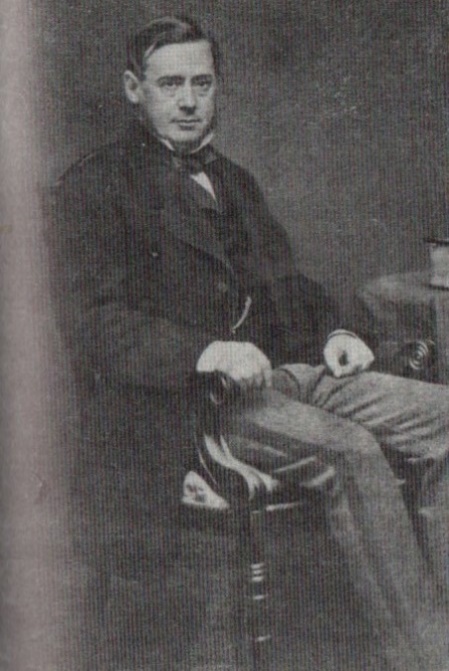
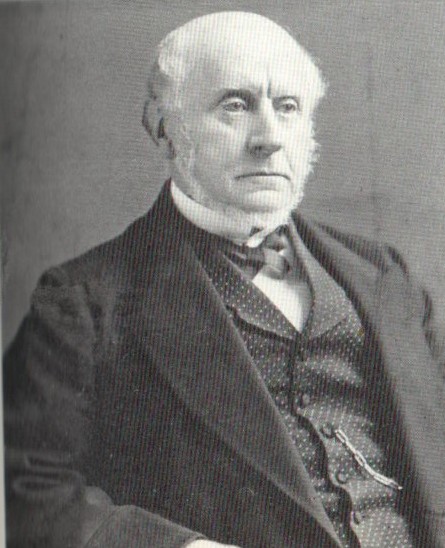
I learned a great deal from the book. The constant manoeuvring of armies and the shockingly high casualties when they met in battle should have been no surprise, but the use of material from British journalists and volunteers brings this home in a vivid way. The Illustrated London News, founded twenty years earlier, was a pioneer and Frank Vizetelly, artist, war reporter and brother of the editor, took the next boat to America and stayed there throughout the war, attaching himself to southern forces. Many of his illustrations are included in the book and he emerges as both brave and likeable.
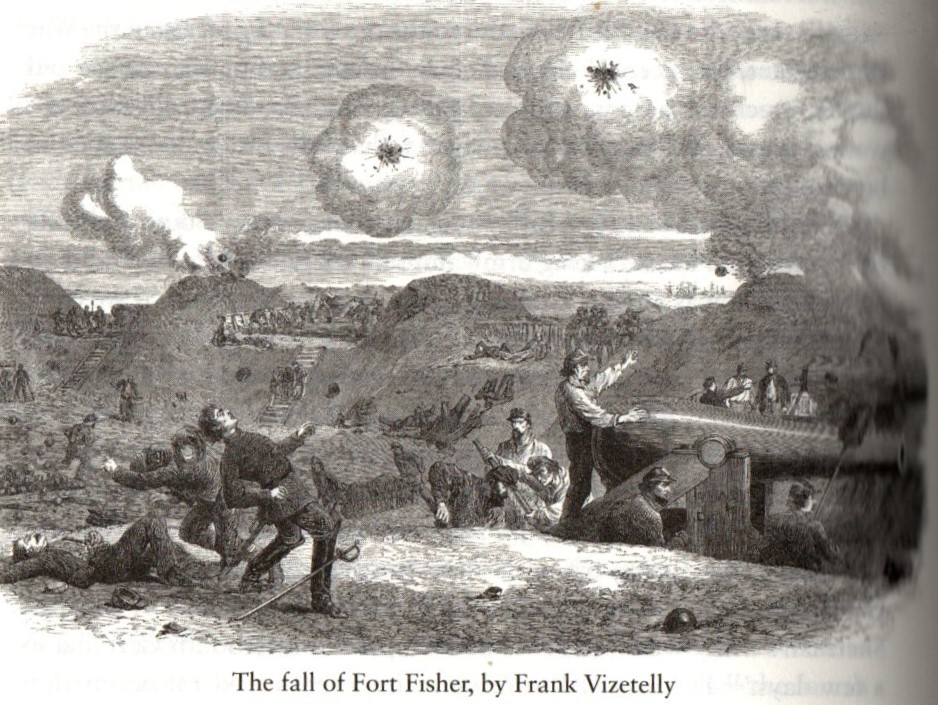
More surprising was the total absence of a ‘special relationship’ between Britain and the Union. Citizens and politicians in the northern states had little time for Britain and hostility was particularly strong in areas of Irish settlement. The Union wanted Britain to keep out and came dangerously close to going to war to enforce this. The South by contrast was anxious for British support but ran a less than effective campaign to achieve this outcome. On the whole the British Government was more statesmanlike in preserving the peace and Lord Palmerston, often seen as the instigator of gunboat diplomacy, showed skills developed over a lifetime in politics and diplomacy. He was naturally inclined to be anti-American, not least because, as a young man, he had been Secretary at War during the War of 1812 when British forces burned the White House. Half a century later, he worked for ‘peace with honour’ and, with the help of Foreign Secretary Russell and Ambassador Lyons, he achieved it. It has to be said that Mr Gladstone was rather more of a disruptive force. Politicians then as now had to contend with a less than supportive press and ‘The Times’ can be singled out as a dangerously biased provider of news and comment that favoured the Confederates.
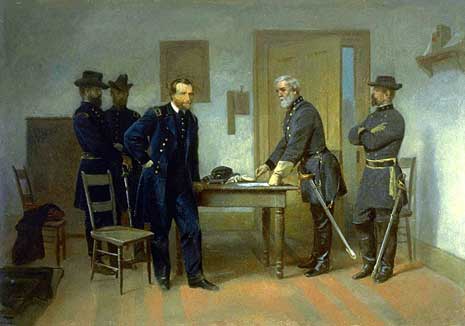
One final theme deserves to be noted and it is one that runs through the whole book. The American Civil War took place in a period of dramatic technological change. Heavy artillery, trench warfare and supply lines based on railroads made this the first modern war. The impact on diplomacy was just as important. The 1860s was the first decade in which steamships were able to cross the Atlantic according to a timetable, which only the most extreme weather could disrupt. The arrival of diplomatic messages and newspapers was therefore much more predictable but, even so, a full fortnight or more would elapse before a response could be expected. Inevitably, this meant more responsibility rested with ambassadors, although they, of course, were in a stronger position to keep things on hold and perhaps allow tempers to cool. Things could easily have been very different because, on 16th August 1858, Queen Victoria had sent a message to President Buchanan congratulating him on the opening of a transatlantic telegraph system using a cable laid from
Ireland to Newfoundland by the American company ‘Atlantic Telegraph’. Three weeks later, the cable was destroyed when excessive voltage was applied. Another 8 years, including the whole course of the American Civil War, elapsed before another cable was successfully completed. Again, Queen Victoria sent a telegram, this time to President Johnson, expressing the wish that it would ‘serve as an additional bond of Union between the United States and England (sic)’. However, as Amanda Foreman notes, this was just a hope, although relations did improve by the end of the century and may have eventually become ‘special’ during World War One.
Roger Mitchell
Contacts
Chair: Alan Potter
alanspotter@hotmail.com
07713 428670
Secretary: Roger Mitchell
rg.mitchell@btinternet.com
01695 423594 (Texts preferred to calls)
Membership Secretary: Rob Firth
suesmembers74@gmail.com
01704 535914
Forum Editor: Chris Nelson
chris@niddart.co.uk
07960 117719
Facebook: facebook.com/groups/southportues
See our archive for previous editions of the SUES Forum!